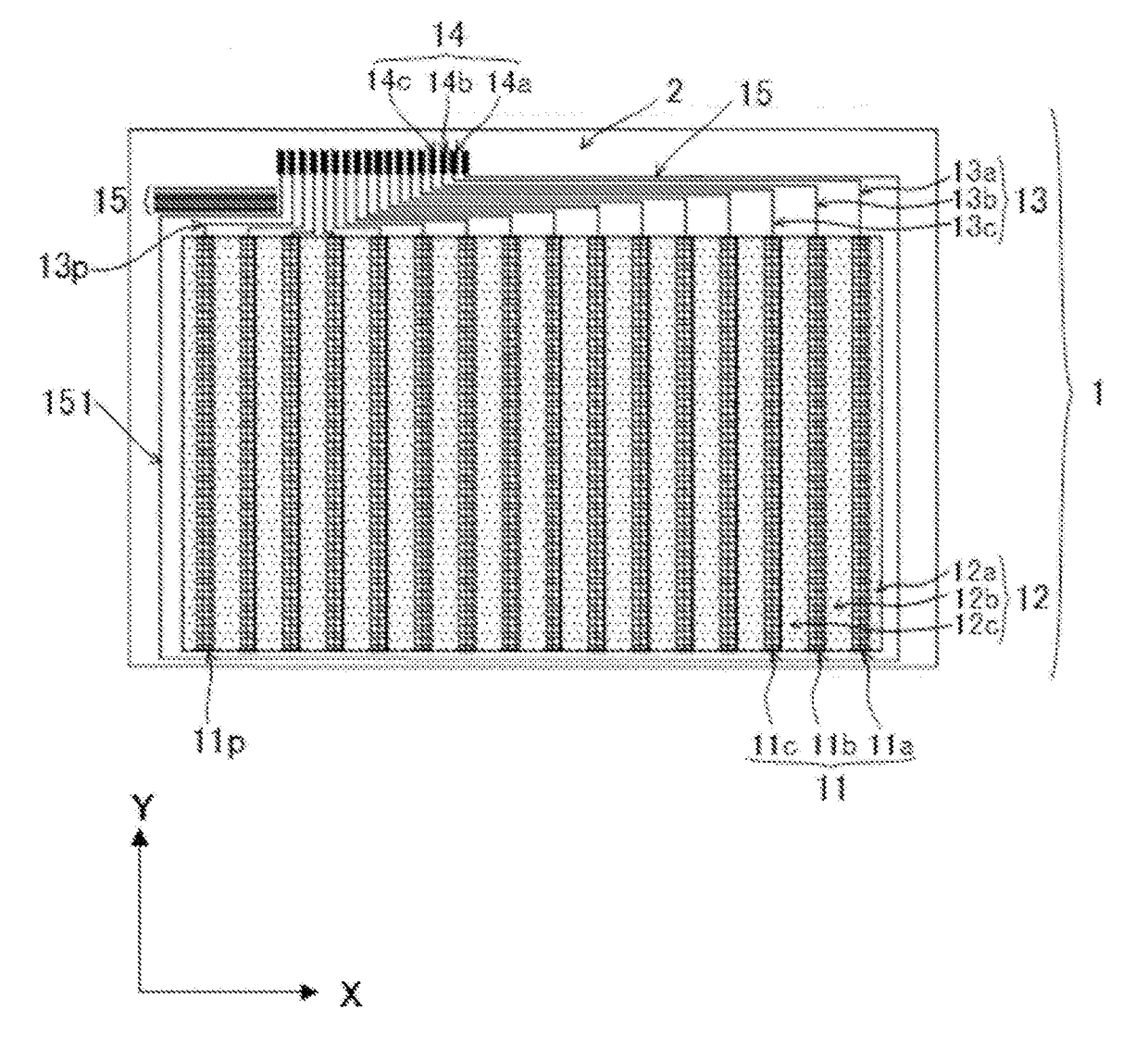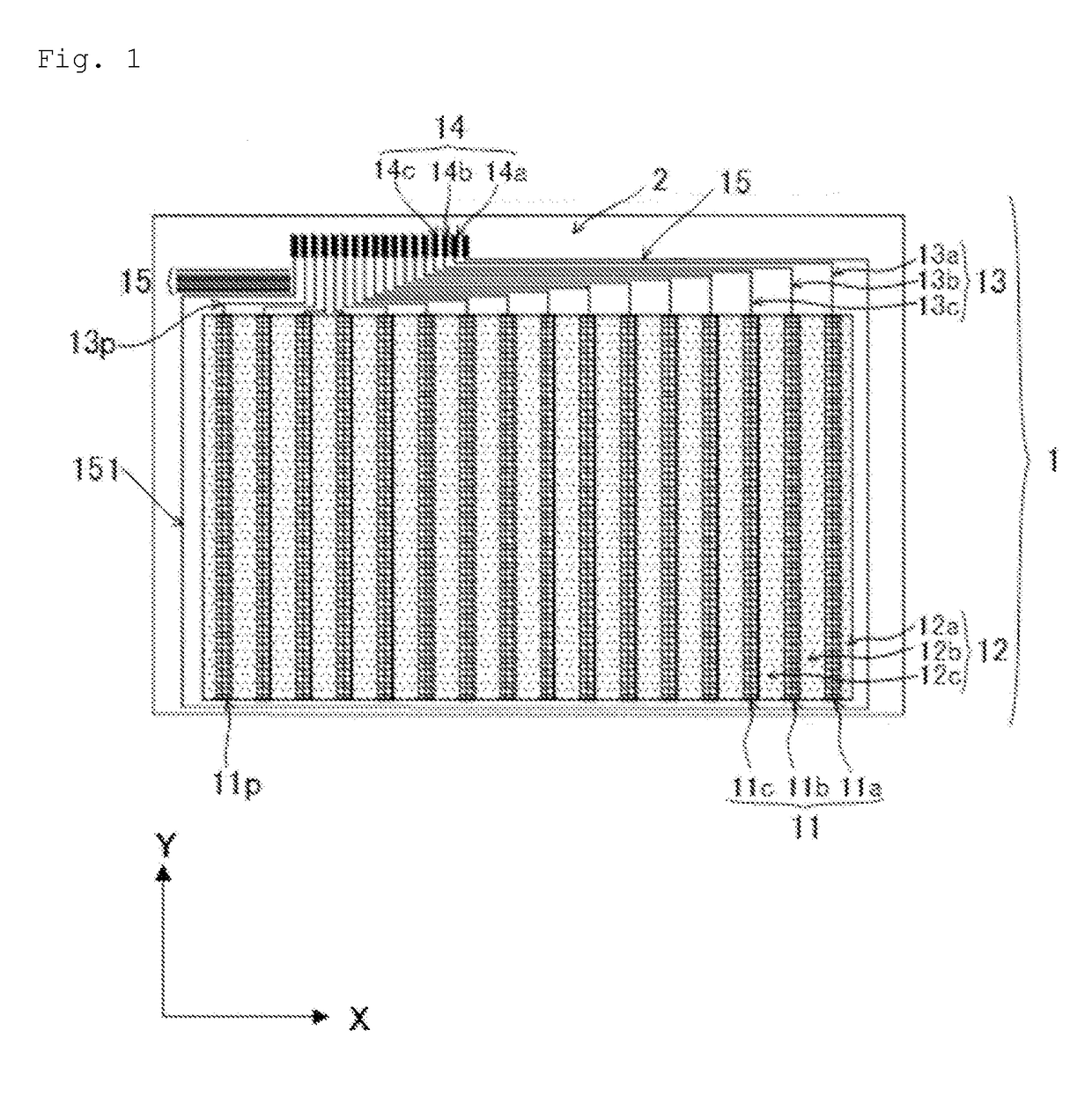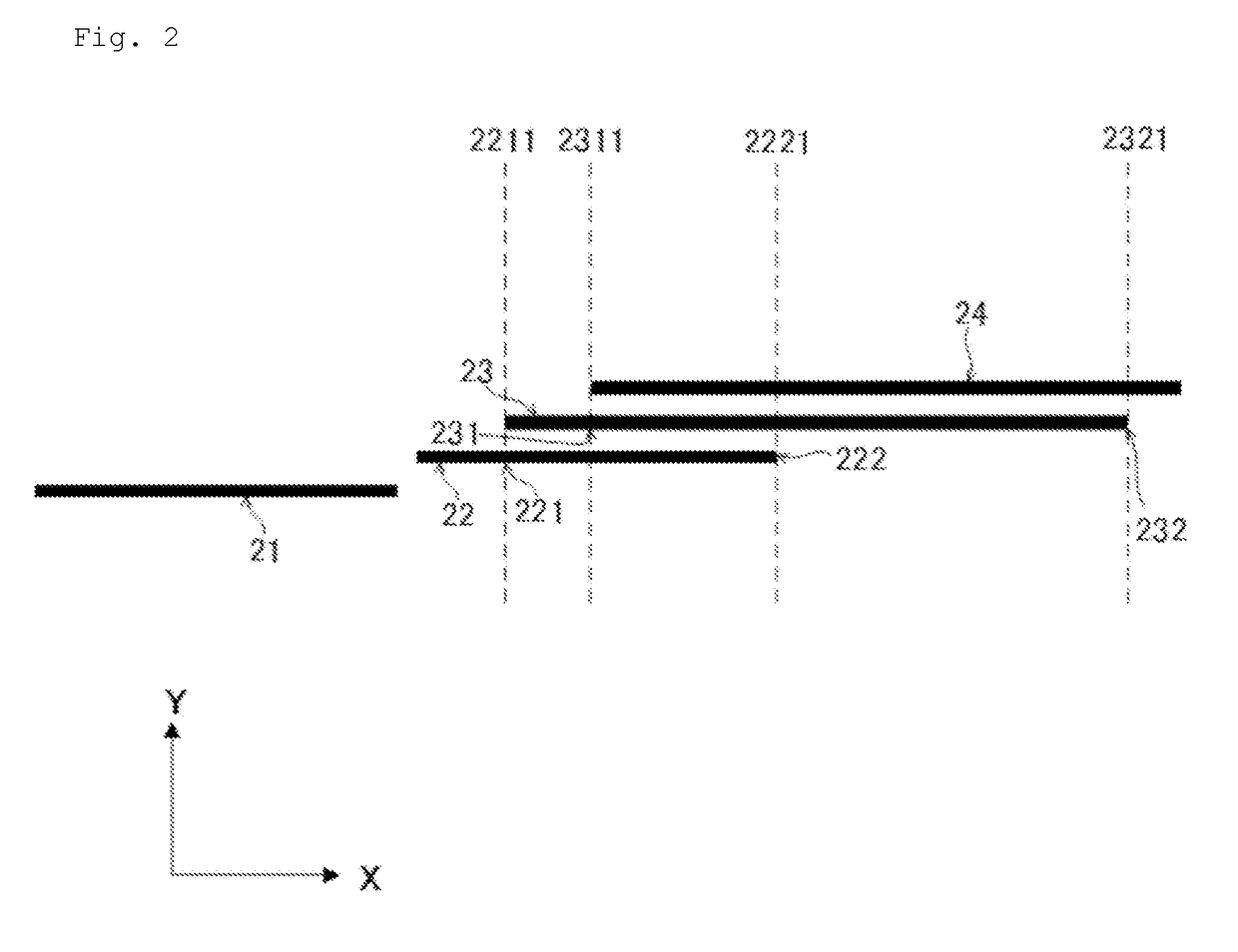Optically transparent conductive material
a technology of conductive materials and transparent materials, applied in the direction of dielectric characteristics, circuit optical details, instruments, etc., can solve the problems of line breakage sensor parts tend to be charged, etc., and achieve the effect of improving the yield in the production of touchscreens and preventing the electrostatic destruction of peripheral wire parts
- Summary
- Abstract
- Description
- Claims
- Application Information
AI Technical Summary
Benefits of technology
Problems solved by technology
Method used
Image
Examples
examples
[0040]Hereinafter, the present invention will be illustrated in more detail by Examples, but the present invention is not limited thereto and can be embodied in various ways within the scope of the invention.
1>
[0041]As a support, a 100-μm-thick polyethylene terephthalate film was used. The total light transmittance of this support was 91%.
[0042]Next, in accordance with the following formulation, a physical development nuclei coating liquid was prepared, applied onto the support, and dried to provide a physical development nuclei layer.
[0043]
Liquid APalladium chloride5gHydrochloric acid40mLDistilled water1000mLLiquid BSodium sulfide8.6gDistilled water1000mL
[0044]Liquid A and Liquid B were mixed with stirring, and after 30 minutes, passed through a column filled up with an ion exchange resin to give a palladium sulfide sol.
per m2 of Silver Halide Photosensitive Material
[0045]
The above-prepared palladium sulfide sol0.4mg2 mass % glyoxal aqueous solution0.2mLSurfactant (S-1)4mgPolyethyl...
PUM
 Login to View More
Login to View More Abstract
Description
Claims
Application Information
 Login to View More
Login to View More - R&D
- Intellectual Property
- Life Sciences
- Materials
- Tech Scout
- Unparalleled Data Quality
- Higher Quality Content
- 60% Fewer Hallucinations
Browse by: Latest US Patents, China's latest patents, Technical Efficacy Thesaurus, Application Domain, Technology Topic, Popular Technical Reports.
© 2025 PatSnap. All rights reserved.Legal|Privacy policy|Modern Slavery Act Transparency Statement|Sitemap|About US| Contact US: help@patsnap.com



